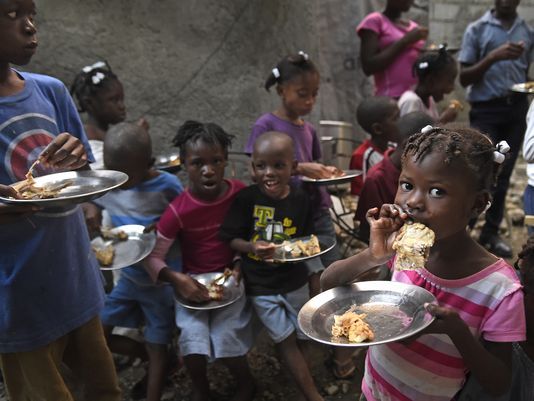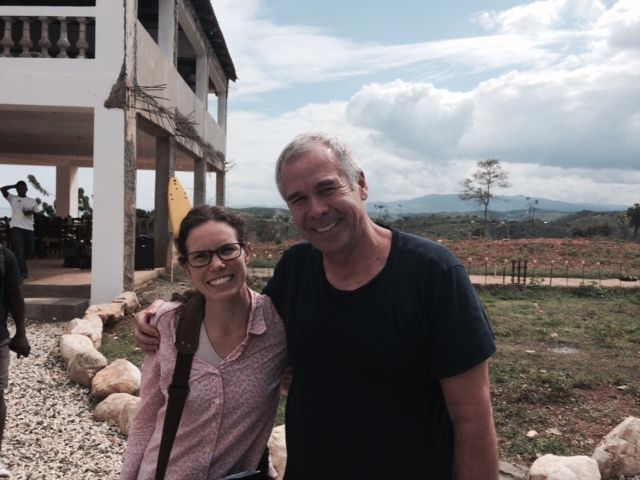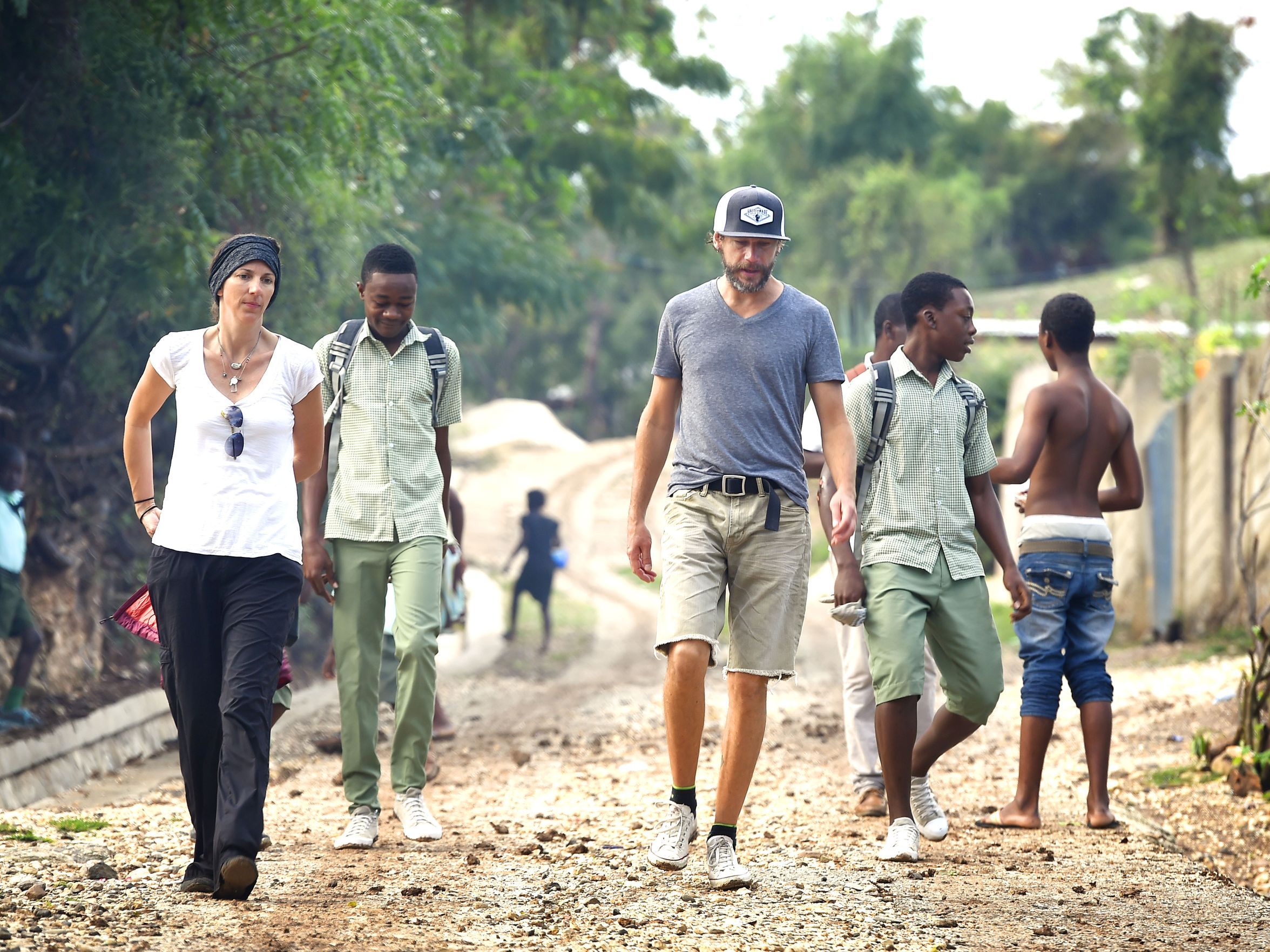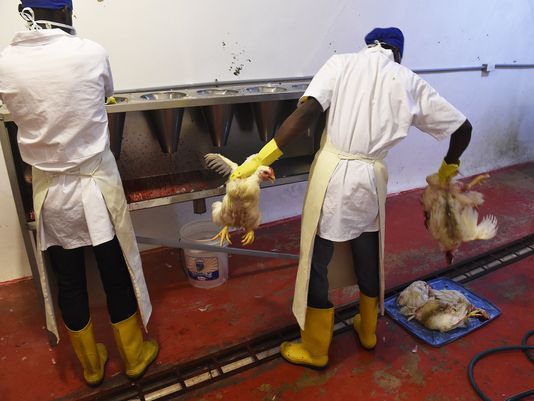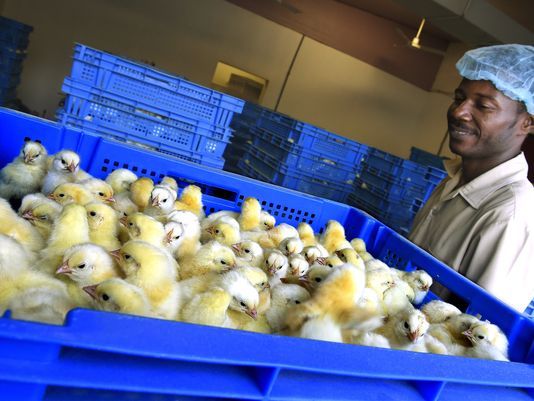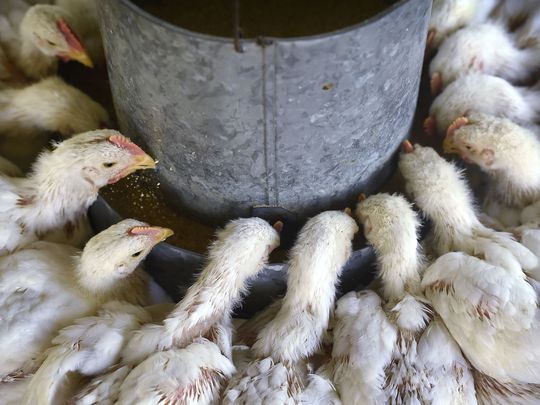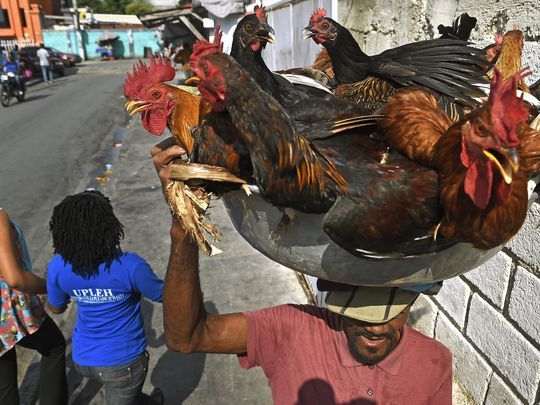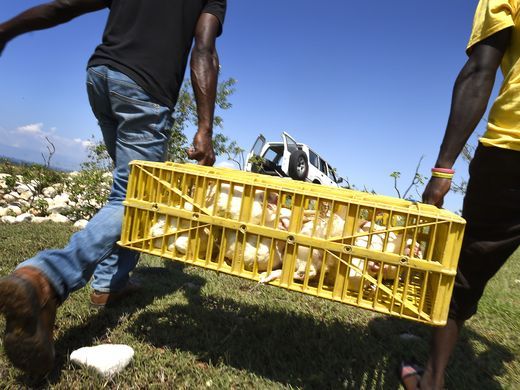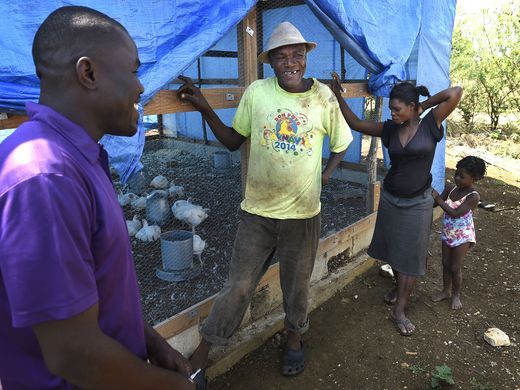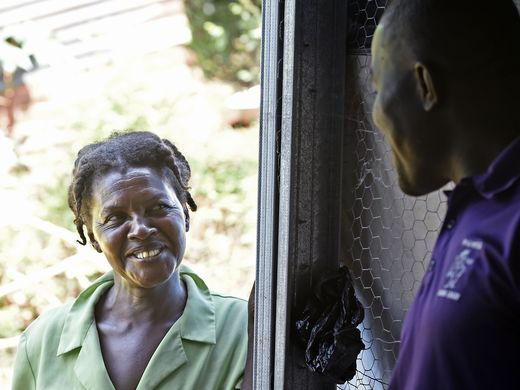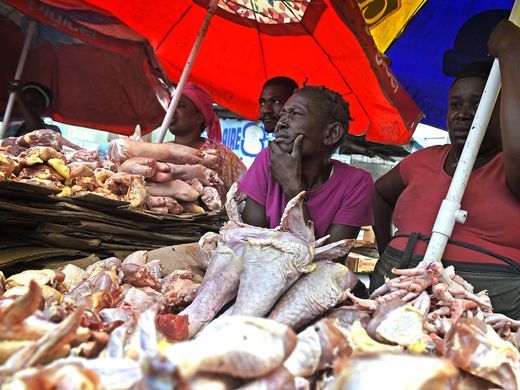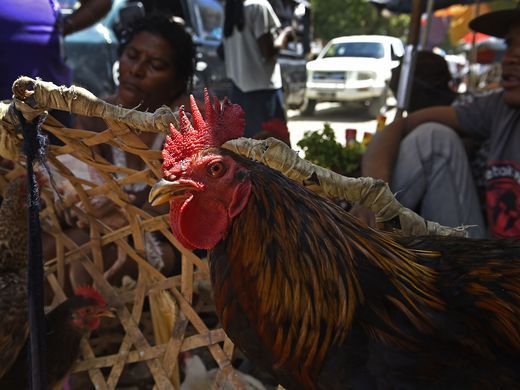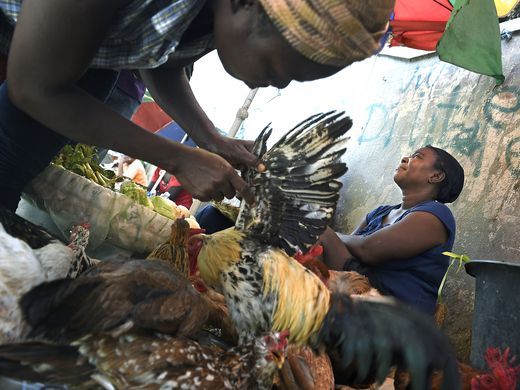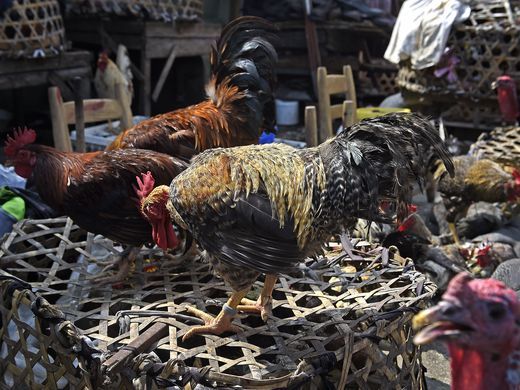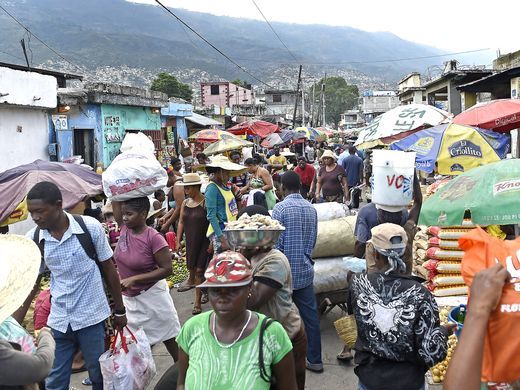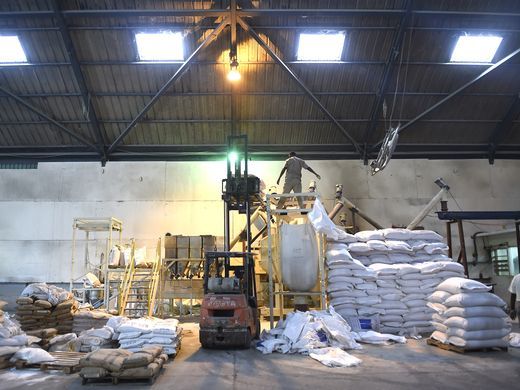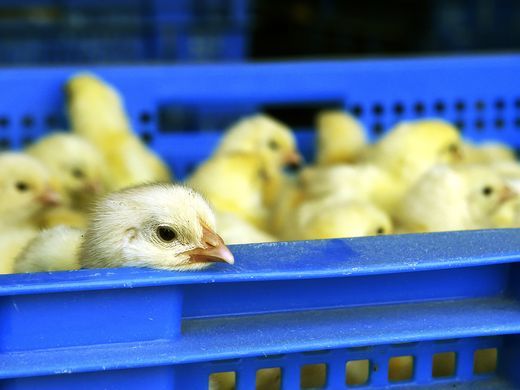Common Core Standard:
CCSS.ELA-LITERACY.RI.9-10.3: Analyze how the author unfolds an analysis or series of ideas or events, including the order in which the points are made, how they are introduced and developed, and the connections that are drawn between them.
Objective:
You will be able to analyze how authors structure reporting on solutions to challenges facing communities in Haiti in order to create publicity materials informing your community about the best ways to offer relief.
Warm up:
1. Imagine you and your classmates are planning to visit a country that has recently struggled with the following challenges:
- An earthquake just over five years ago that destroyed over 100,000 homes
- A cholera outbreak five years ago that made water dangerous to drink
- An unstable political system, which has led to widespread poverty.
Your goal for this trip is to help the community in some way. You will be there for one week.
2. Write your responses to the following questions:
- What do you think the communities in this country need?
- What are some things that you and your class can do in your week to help?
Introducing the Lesson:
The challenges listed above are currently being faced by the nearly 11 million people living in Haiti, a country in the Caribbean.
- What do you already know about Haiti?
- What questions do you have? Be prepared to discuss Haiti’s history with your class. You may need to do some quick research.
Since 2010, when Haiti was hit by a devastating earthquake, billions of dollars have poured into the country to support relief initiatives. This lesson analyzes Jamie McGee and Larry McCormack’s reporting on the impact of those initiatives, and explores additional solutions to combating growing poverty in the country.
“Is there a meaningful way to contribute to a country in which the majority of the population lives in poverty?” McGee writes as part of her reporting. “Is it writing a check, offering our labor, building a new organization or staying on the sidelines?”
Learn more about McGee and McCormack’s goal for this reporting by watching the “Meet the Journalist” video attached. Be prepared to answer the following questions:
- What is “solutions journalism?” Click here to learn more.
- What is the difference between an investment and a donation?
As you continue with the lesson, pay close attention to how McGee and McCormack use interviews, research, photos and video to communicate solutions.
Consider the following GUIDING QUESTIONS FOR THE LESSON as you review each resource:
- What is the challenge described in the article?
- What is the solution that the reporters are investigating?
- What interviews and research best support that the solution being offered is a good one? What examples are most sticking with you?
Resource 1: Want to Help Haiti? Act Like a Tourist”
1. Watch the video attached, and then read the accompanying article.
2. Answer the questions attached.
3. Analyze how McGee and McCormack structure this article by writing your responses to the following GUIDING QUESTIONS FOR THE LESSON:
- What is the challenge described in the article?
- What is the solution that the reporters are investigating?
- What interviews and research best support that the solution being offered is a good one? What examples are most sticking with you?
Resource 2: "Chicken Farming Brightens Future for Haitians"
Read the article and answer the questions attached.
Analyze how McGee and McCormack structure this article by writing your responses to the following GUIDING QUESTIONS FOR THE LESSON:
- What is the challenge described in the article?
- What is the solution that the reporters are investigating?
- What interviews and research best support that the solution being offered is a good one? What examples are most sticking with you?
Resource 3: In Photos: Haiti’s Poultry Industry
1. Review the photos and captions, and then answer the accompanying questions.
2. Analyze how McGee and McCormack structure this article by writing your responses to the following GUIDING QUESTIONS FOR THE LESSON:
- What is the challenge described in the article?
- What is the solution that the reporters are investigating?
- What interviews and research best support that the solution being offered is a good one? What examples are most sticking with you?
Resource 4: Haiti Poultry Industry Still Feels Pain of US imports
1. Read the article and answer the questions attached.
2. Analyze how McGee and McCormack structure this article by writing your responses to the following GUIDING QUESTIONS FOR THE LESSON:
- What is the challenge described in the article?
- What is the solution that the reporters are investigating?
- What interviews and research best support that the solution being offered is a good one? What examples are most sticking with you?
Discussion/Analysis:
Write your responses to the following questions:
- Which solution do you think will most benefit Haitians? Why?
- Which example from the articles most stuck with you?
- How does McGee and McCormack’s work represent solutions journalism?
Be prepared to share your responses with the class.
Extension Activities:
1. Create a promotional flier that encourages your community to engage with one of the programs that you read about today. Use information from the articles/photos/video as part of your promotion material.
2. Read the article “Aid to Haiti Is Needed But Must Be Done in Way That Helps” and analyze the other solutions offered by McGee and McCormack.
- Develop a plan for a reporting project that would highlight one of these initiatives. Make a list of who you would interview, what research you would need to do to defend this solution and decide how you would present your reporting project. Be prepared to share your plan with the class.
- Choose one project that you would like to support. Organize a fundraising campaign at your school to raise money for the one of the organizations highlighted in the article. Be sure to use evidence from the article, along with any other additional research, to support your campaign. Consider using crowdfunding campaigns like Go Fund Me to raise money.
Share the results of your extension activities with the Pulitzer Center by emailing [email protected].
In the following lesson, students review up to six resources to investigate solutions to economic challenges facing Haitians using reporting by Jamie McGee and Larry McCormack. The resources can be reviewed one at a time, or the lesson could be facilitated to have students work in groups to become experts in one of the articles. Groups could then report to the rest of the class about the resource they explored.
Other lesson facilitation notes:
1. The lesson plan is written for students to be able to explore the resources and reflection exercises independently.
2. Students may need to have an extra sheet of paper, or a blank online document open, to answer the warm up, comprehension and extension questions.
3.The lesson lists several extension exercises. Students could choose one or work through all of the listed exercises.
4. The warm up and post-reading reflections in this lesson could also lead to rich conversations. You may want to work through the lesson along with the students and denote moments for interactive activities.
5. This lesson can be sent to students electronically by clicking "share" once it is published. From the electronic lessons, students can access the Pulitzer Center reporting by clicking on the links under "Resources". When printing the lesson, the text from the resources will print after the student instructions.
6. With questions about this lesson, contact [email protected]
